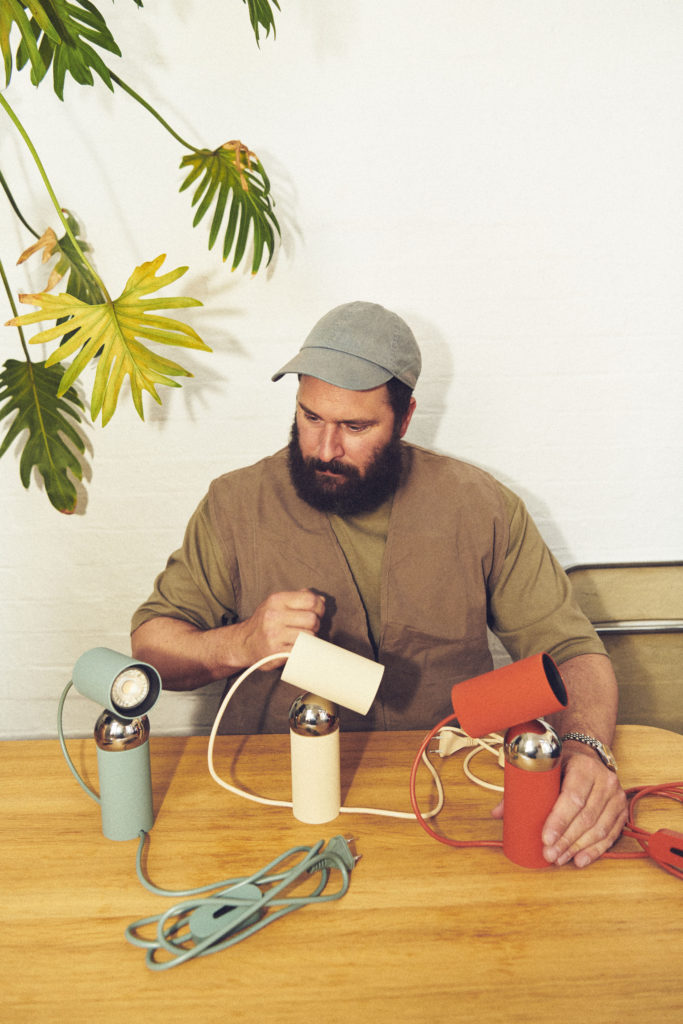Bilboquet: with his first lamp designed for Flos, Philippe Malouin creates a poetic lamp built on natural gestures

Bilboquet is a table lamp by Canadian designer Philippe Malouin, marking his first collaboration with Flos.
The lamp consists of two colored cylinders connected by a magnetic sphere that acts as a joint and allows the upper cylinder to rotate, directing the flow of light. All the elements that compose it are inspired by the bilboquet, a game born in France in the 16th century, to which the Malouin lamp owes its name.
The tool to play bilboquet was a perforated wooden ball tied with a string to the middle of a stick that was pointed at one end and equipped with a concave plate at the other. The game consisted of popping the ball, then receiving it: either on the point that fits into the hole in the ball or on the saucer.
With Bilboquet, Malouin transforms the use of light by evoking a playful experience and using it to create a balance of shapes, materials and colors.
In this search for an emotional bond, in its formal clarity and visual uniqueness, lies the entire design poetics of Malouin, a designer who has always pursued simplicity (of production, assembly and aesthetics) and durability as key elements of good design.
Single colored body, cable and plug for consistent aesthetics
The playful aspect of Bilboquet is also central in the choice of the three-color palette, sage, tomato and linen, which characterize not only the body of the lamp, but also the cable and plug, resulting in a body with consistent aesthetics. Bilboquet has been designed to be adaptable to the most diverse requirements: in addition to the cylinder, which is adjustable, the cable can also be left free or concealed, locked in a special housing under the base.

Future-poof design
Bilboquet’s sustainability is expressed through its innovative material, outstanding design and manufacturing qualities.
The external body of Bilboquet is made of a special polycarbonate derived from a by-product of paper production rather than petroleum.
In the process of extracting cellulose from wood to produce paper, also derives a special viscous liquid called tallolja in Swedish and tall oil in English. Thanks to a recently introduced industrial process, this oil, traditionally used to produce ink, can now be used to produce a polycarbonate with the same characteristics as the common one.
This sustainable plastic material is therefore not only based on renewable natural resources but, unlike other plant-based plastics that require dedicated cultivation, it does not involve exploitation of land and wastefulness of water.
For this reason, Bilboquet complies with the International Sustainability & Carbon Certification (ISCC) protocol under the European Community’s Renewable Energy Directive (RED). This certification is achieved by demonstrating the sustainability of products created from biomass as a way to replace plastic from fossil fuels.
The steel sphere of Bilboquet also presents highly sustainable features. In fact, the protective layer which prevents oxidation and also enhances its shape, does not consist in a traditional anticorrosive galvanic coating but in a PVD (Physical Vapor Deposition) surface treatment: a subtle innovation that guarantees impeccable aesthetic results without resorting to the use of an invasive production process.
The steel spheres, traditionally used in wind turbines, are sometimes rejected due to minimum defects on the diameter, in the amount of hundredths of millimeter. Bilboquet allows to exploit this negligible defect, thus avoiding the sphere having to return to a production cycle that requires a lot of energy.
But there’s more. The entire life cycle of Bilboquet, from the source of the raw materials to their disposal, is defined according to rigorous criteria set by the ISO standards for Life Cycle Assessment (LCA). This is possible because even if you do not see a single screw, Bilboquet has no glued parts.
The absence of adhesives has several advantages. First of all, the customer can directly carry out replacement of the LED bulb, ensuring a long casting life for the lamp. Secondly, Bilboquet can be disassembled in all its components, and each part can be properly recycled depending on the material.
Finally, the lamp features a super-compact packaging. Shipping and storage volumes are reduced to a minimum as the product is decomposed within the packaging, offering users a simple and fun assembly experience.





